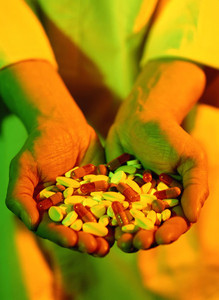The effectiveness of Chile’s 2014 generics substitution policy has been assessed by an international team of researchers. In their BMJ Global Health [1] article, the authors reveal that, although there has been a decrease in the uptake of expensive originator drugs, this is not mirrored by an increase in the uptake of less expensive bioequivalent products. This shows that further work is needed to help increase the uptake of generics in Chile.
Evaluating success: generics substitution policy in Chile
Generics/Research
|
Posted 27/09/2019
 0
Post your comment
0
Post your comment

Previous studies into the effect of Chile’s 2014 policy [2, 3] on bioequivalent product prices, have led to uncertainty over its success. The recent evaluation is the first quasi-experimental assessment of the effect of the substitution policy on the volume and price of medicines.
The Chilean pharmaceutical market is made of both public and private markets. As it plays a significant role – 31% of the market [4] – the evaluation of the 2014 policy focussed on the out-of-pocket sales in the private retail market. In their assessment, the authors considered the volume and total private sales of medicines sold at private sector retail outlets between November 2011 and October 2016. This included 16 active pharmaceutic ingredients (many were excluded for various reasons) that were then sorted into therapeutic categories and each product available containing that ingredient was classified as either referent, bioequivalent or non-bioequivalent.
The team carried out single-group interrupted time series (ITS) analysis to measure the effect of the substitution policy. For this, they needed the defined daily doses (DDD’s) of each of the 16 active pharmaceutical ingredients, and the DDD’s of each of the individual products containing that active ingredient. The DDD of a drug is an average daily dose defined for each drug in its main indication and is used to estimate drug consumption independent of dosage form and price so that comparisons can be made between population groups. The team obtained data from the retail private market sales database and the market authorization registry, managed by Chile’s National Institute of Public Health (ISP). Additional analysis of the active pharmaceutical ingredients was carried out to find out if referent products were being directly substituted by bioequivalent products.
The results showed that the 2014 policy had an impact on the DDDs – or doses of originator products. Immediately after the implementation there was sharp increase in doses of originators, but this was then followed by a steady decrease in doses after that time. Despite this, there was no apparent change in the doses of bioequivalent medicines over this time period. The analysis also revealed that referent medicines did not seem to be substituted by branded generic versions, except in the case of three ingredients: prednisone, zidovudine and doxycycline.
Through additional calculation, it is now apparent that in Chile the price of bioequivalent products is always lower than their referent products. As such, these products should be more attractive to patients. The authors present a number of reasons as to why the uptake of generics does not mirror the reduction in use of referent products. They also suggest that, to improve access to medicines in Chile, more work is required to promote the uptake of generics and a policy to communicate the benefits of generics should be implemented.
Related article
Generics in Chile: policy success but promotion required
References
1. Mansilla C, Cárdenas J, Warren I. Evaluation of the effects of a generic substitution policy implemented in Chile. BMJ Glob Health 2019;2:e000922.
2. Balmaceda C, Espinoza MA, Diaz J. Impacto de una política de equivalencia terapéutica en el precio de medicamentos en Chile. Value Health Reg Issues. 2015;8:43-8.
3. Servicio Nacional del Consumidor. Disponibilidad de medicamentos bioequivalentes en el mercado farmacéutico metropolitano y sus ventajas económicas para los consumidores. 2017 [homepage on the Internet]. [cited 2019 Sep 6]. Available from: https://www.sernac.cl/portal/619/articles-5451_archivo_01.pdf
4. Ministerio de Salud. Informe final. Gasto catastródico y de bolsillo en salud para el período 1997–2012. 2015 [homepage on the Internet]. [cited 2019 Sep 5]. Available from: http://desal.minsal.cl/wp-content/uploads/2016/ 05/ESTUDIO-GASTO-CATASTROFICO_final-nueva-infograf.pdf
Permission granted to reproduce for personal and non-commercial use only. All other reproduction, copy or reprinting of all or part of any ‘Content’ found on this website is strictly prohibited without the prior consent of the publisher. Contact the publisher to obtain permission before redistributing.
Copyright – Unless otherwise stated all contents of this website are © 2019 Pro Pharma Communications International. All Rights Reserved.
Most viewed articles
The best selling biotechnology drugs of 2008: the next biosimilars targets
Global biosimilars guideline development – EGA’s perspective
Related content
Japan’s drug shortage crisis: challenges and policy solutions
Saudi FDA drug approvals and GMP inspections: trend analysis
Generic medications in the Lebanese community: understanding and public perception
Community pharmacists’ understanding of generic and biosimilar drugs: Lebanon case study
Generic medications in the Lebanese community: understanding and public perception

Generics/Research Posted 23/01/2024
Community pharmacists’ understanding of generic and biosimilar drugs: Lebanon case study

Generics/Research Posted 08/09/2023
The best selling biotechnology drugs of 2008: the next biosimilars targets








Post your comment